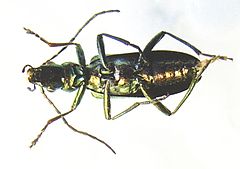
The family Oedemeridae is a cosmopolitan group of beetles commonly known as false blister beetles, though some recent authors have coined the name pollen-feeding beetles. There are some 100 genera and 1,500 species in the family, mostly associated with rotting wood as larvae, though adults are quite common on flowers. The family was erected by Pierre André Latreille in 1810.

Oedemera is a genus of beetles of the family Oedemeridae, subfamily Oedemerinae.

Tettigonia viridissima, the great green bush-cricket, is a large species of bush-cricket belonging to the subfamily Tettigoniinae.
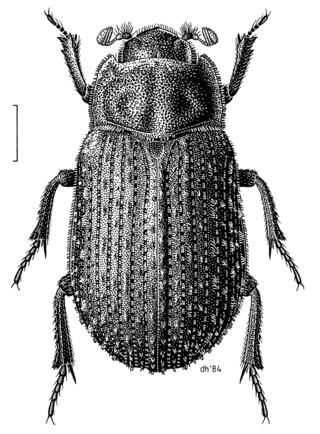
Trox scaber is a beetle of the family Trogidae. The 5 to 8 mm long insect is found worldwide, including in Europe, and lives in bird nests.

Oedemera nobilis, also known as the false oil beetle, thick-legged flower beetle or swollen-thighed beetle, is a beetle in the family Oedemeridae, a common species in Western Europe, including the south of England.

Adalia decempunctata, the ten-spotted ladybird or ten-spotted lady beetle, is a carnivorous beetle of the family Coccinellidae.

Cryptocephalus sericeus is a species of beetle of the family Chrysomelidae, subfamily Cryptocephalinae.

Oedemera atrata is a species of beetle belonging to the family Oedemeridae subfamily Oedemerinae.
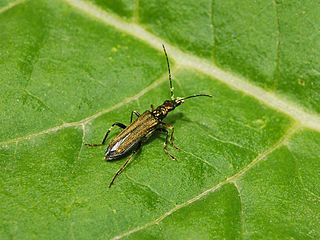
Oedemera flavipes is a very common species of beetle of the family Oedemeridae, subfamily Oedemerinae.
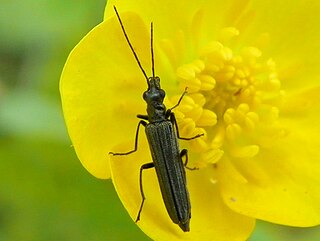
Oedemera lurida is a species of beetle belonging to the family Oedemeridae subfamily Oedemerinae.

Oedemera podagrariae, common name false blister beetle, is a quite common species of beetles belonging to the family Oedemeridae subfamily Oedemerinae.

Chrysanthia is a genus of beetles belonging to the family Oedemeridae subfamily Nacerdinae.

Aphidecta obliterata is a species of Coccinellidae, a flying beetle.

Taeniotes farinosus is a species of beetle in the family Cerambycidae. It was described by Carl Linnaeus in 1758, originally under the genus Cerambyx.
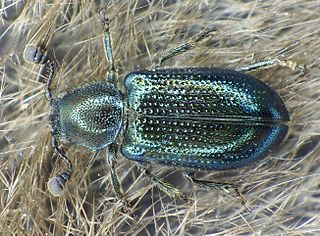
Necrobia violacea is a species of beetle in family Cleridae. Cleridae beetles are a predaceous beetle found within forest and woodland environments, and can be associated with stored food products as both pests and predators of other insects.

Tillus elongatus is a species of beetle in the family of checkered beetles Cleridae. It is found in the Palearctic. The “Holz” in the German common name Holzbuntkäfer indicates that these checkered beetles are found in wood. Although Tillus elongatus can reach up to a size of 1 cm long, the beetle is rarely seen by humans, as it primarily resides hidden in the wood of trees. The colouration of the males differs from that of the females.

Anisosticta novemdecimpunctata is a species of beetle in family Coccinellidae. It is found in the Palearctic.

Luperus flavipes is a species of skeletonizing leaf beetle belonging to the family Chrysomelidae, subfamily Galerucinae.
Chrysanthia superba is a species of false blister beetles belonging to the family Oedemeridae.
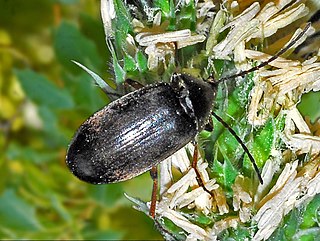
Isomira hypocrita is a species of comb-clawed beetles belonging to the family Tenebrionidae subfamily Alleculinae.




